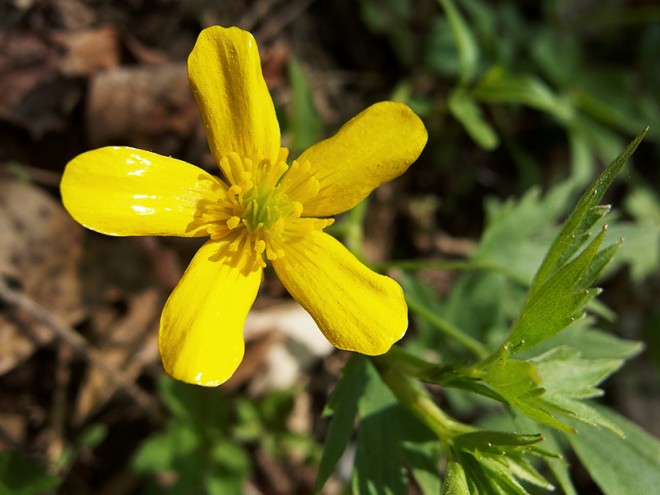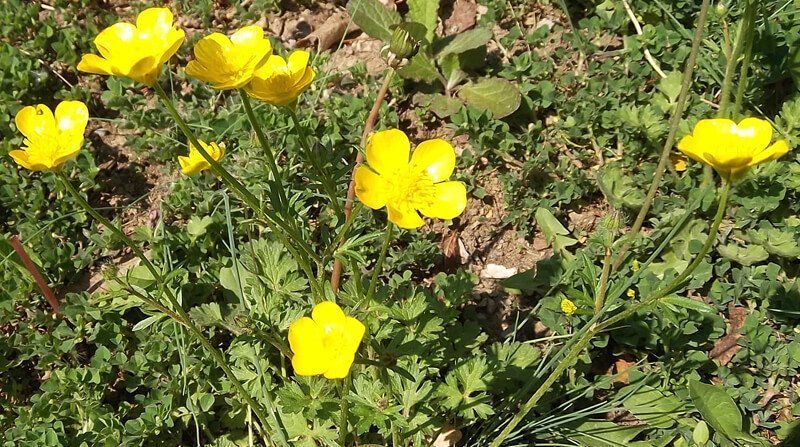The Cucurbita genus is generally known as the gourd family of plants and includes squash, pumpkins, and gourds. There are four Cucurbita species which are commonly grown as annuals. While squash varieties within each species will readily cross pollinate. Buttercup, (genus Ranunculus), also called crowfoot, genus of about 300 species of herbaceous flowering plants in the family Ranunculaceae. Buttercups are distributed throughout the world and are especially common in woods and fields of the north temperate zone. Most varieties of buttercups are perennial, but they can also be annuals, biennials, herbaceous, aquatic, or terrestrial. As perennials, buttercups have runners that will spread out to develop new plants. This is what makes it possible for kids around the world to stick the little flowers under their chins. Squash belongs to the genus ' Cucurbita '. The Cucurbita genus is generally known as the gourd family of plants and includes squash, pumpkins, and gourds. Within the Cucurbita genus, there are four species which are commonly grown as annuals: Cucurbita mixta, Cucurbita maxima, Cucurbita moschata, and Cucurbita pepo. We offer acorn, buttercup, delicata, hubbard, butternut, kabocha, and spaghetti squash varieties, from heirlooms to newcomers, all with excellent eating quality. Some varieties are delicious right from the field, whereas others increase in sweetness after weeks or months of storage.
Ranunculaceae
Plants of the Buttercup Family
The Buttercup family is like a window back in time. None of today's species were around 100 million years ago, but the Buttercups and other primitive groups like the Magnolias have retained the most ancestral characteristics over time. The Buttercups are considered very 'simple' because the floral parts-the petals, sepals, stamens and pistils-are all of an indefinite number and separate from one another. Also, the stamens and pistils are spirally inserted in a cone-like receptacle, although it is often very small to see. More advanced plant families have reduced, more specific numbers of floral parts, and the parts are often fused together.
The Buttercup family may be considered 'simple' from an evolutionary standpoint, but it includes some flowers that are highly complex in appearance, such as the delphinium and columbine. Yet these flowers are still considered 'simple' because all the parts are independently attached.
You may discover that the most common pattern of the family is the apparent lack of a pattern! Buttercups can have either regular or irregular flowers with anywhere from 3 to 15 sepals, often colored like petals, and 0 to 23 actual petals. There are often, but not always, numerous stamens and 3- to numerous simple pistils (apocarpous). The floral parts are all independently attached below a superior ovary. Most have bisexual flowers, except some species of meadow rue (Thalictrum) and Clematis. Worldwide, there are 35-70 genera in the Buttercup family and about 2,000 species. Twenty-three genera are found in North America.
For the purposes of identification, the most accurate pattern to look for is the multiple simple pistils at the center of the flower. In more advanced plant families there is typically only one pistil, the result of a reduction in numbers along with the fusion of several pistils to make a single compound pistil. A flower with multiple pistils is very likely a Buttercup, but could potentially be confused with species from the Rose subfamily of the Rose Family. A secondary pattern that is often easier to see, but not as consistent, is the hooked tips on the pistils. If you are not sure if you are looking at several separate pistils or some that are only partially fused together, then look for a hook at the tip of the pistil. Many species have hooked pistils, and the hooks often persist as the ovary matures after pollination.
The predominant property in the plants of the Buttercup family is an acrid protoanemonin glycoside oil. Most of the species are listed as poisonous, but most are safe to taste. The buttercup taste is biting and acrid, stronger in some plants than others. Taste it and spit it out. The acrid properties of the buttercups are unstable and are destroyed by drying or cooking, so the very mild buttercups are edible as salad greens or pot herbs. But be careful not to over do even these, as the residual acrid properties may cause a mild inflammation of the kidneys or liver. Mucilaginous plants can be ingested to counter-effect the acrid buttercups. Medicinally, the acrid nature of the plants makes them great for stimulating poultices, similar to a 'mustard plaster'. These poultices can be used on bruises, aches or arthritis to stimulate healing activity inside, but be careful, because the poultices can cause blistering if left in place too long. The poultice can even stimulate activity in cases of mild paralysis. The acrid quality is also beneficial for getting rid of lice. Goldenseal (Hydrastis) is a popular medicinal herb from this family. It is favored for the very bitter and highly antiseptic berberine alkaloid, also found in a few related genera and in the Barberry Family.
WARNING: A number of plants in this family, especially Aconitum and Delphinium contain concentrations of toxic terpenoid alkaloids. These alkaloids depress the central nervous system; they are often used for nervous disorders, antispasmodics and sedatives. Some of these plants can be cautiously used internally (by professionals only!) as heart and respiratory sedatives.
Key Words:Dicot flowers with three or more simple pistils, often with hooked tips.
Please e-mail Thomas J. Harmonia deluxe review. Elpel to report mistakes or to inquire about purchasing high resolution photos of these plants.
Yellow Buttercup
Yellow Seedless
One of the top yellow-fleshed varieties in today's marketplace. Crisp texture and great eating quality.
All watermelon require a signed waiver before we can ship your seed. Many waivers are vendor specific and you may need to sign multiple waviers if you are ordering more than one variety of watermelon.
Attributes

Varieties Of Buttercup Squash
Start in the greenhouse. Allow 28 - 35 days to get plants ready to transplant. Excessive water during germination must be avoided. Water transplant growing medium well and allow excess moisture to drain and moisture to stabilize for 24 - 48 hours. Bring medium temperature to 80 - 95ºF before seeding. Seedcoat adherence to cotyledons may be virtually eliminated by orienting the seed in transplant trays with the pointed end up at a 45º to 90º angle. Plant transplants 6 - 12 feet apart with 36” between plants.
As a general rule direct field seeding of the pollenizer variety should be done on the same day the triploid seed is planted in the greenhouse. Small-fruited, icebox varieties usually flower earlier than standard watermelon varieties. If icebox varieties are to be used as the pollenizer, then direct seeding should be delayed a week to ten days. The diploid icebox pollenizer variety will frequently set fruit and stop producing male blossoms while the triploid variety is still producing female blossoms.
Growers may make a second planting of a pollenizer 2 - 3 weeks after the initial planting to provide pollen for the late-developing female blossoms on the triploid variety. No consistent differences among any standard and icebox types in effectiveness of pollination have been noted. Icebox varieties used as pollenizers result in high early yields; standard varieties used as pollenizers result in high total yields.
For successful seedless watermelon production, an adequate bee population is especially important to transfer the pollen from the pollenizer variety to the seedless variety (seedless watermelons do not produce pollen). The pollenizer variety is normally planted in alternate, or every third row to ensure adequate pollen movement by the bees. At least eight visits to an individual flower of the seedless variety are necessary for adequate hormonal stimulation for normal fruit development. Scout fields very 7 days to monitor weed, insect, and disease pressure.
Ripeness is indicated by a cream to slight yellowing of the white background color of the part of the melon that rests on the ground. Drying of the stem tendril nearest the attachment point of the watermelon and green color tone of the rind are also indicators of ripeness but these vary with cultivar. Melons should be cut from the vine rather than pulled, twisted, or broken off.
Buttercup Varieties Uk
Store at 50 - 60ºF and at a humidity level of 90 - 95%. This will ensure a long shelf life.

